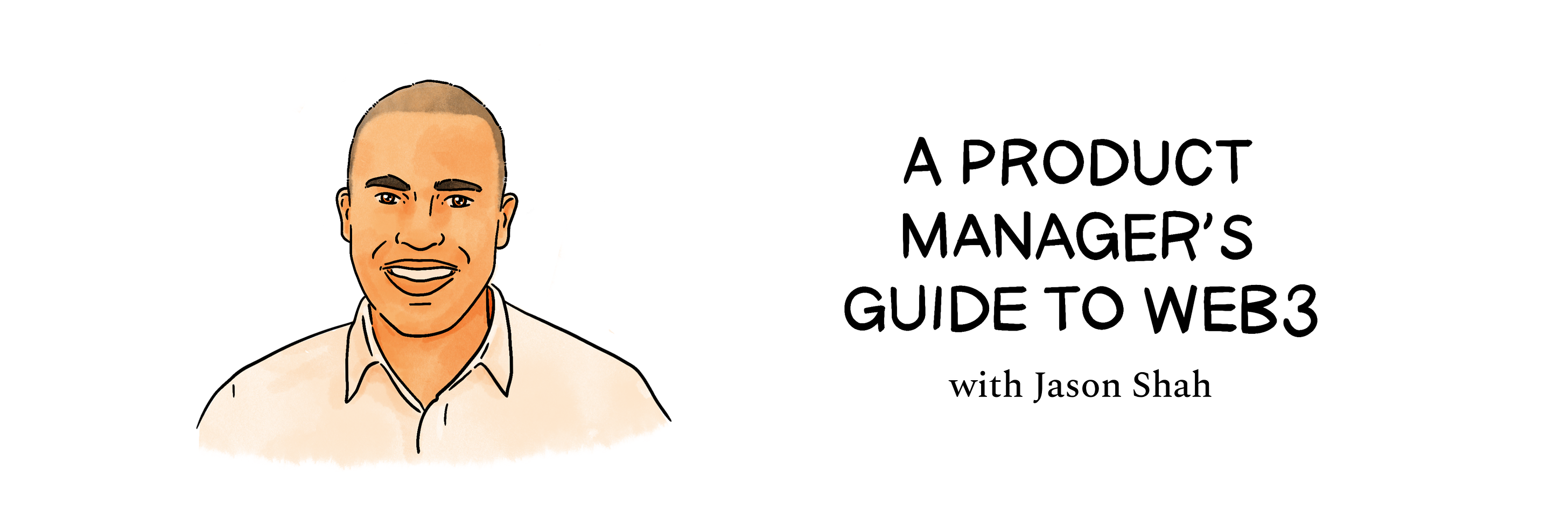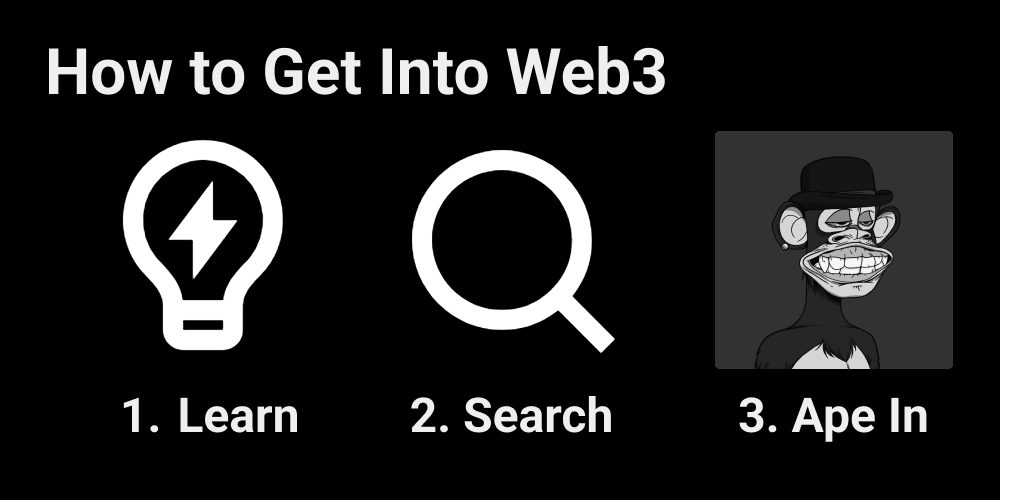Lenny's Newsletter - A product manager’s guide to web3
A product manager’s guide to web3How PM'ing in web3 is different, the pros and cons of going web3, how to break in, and how to be successful—by guest author Jason Shah, head of product at Alchemy👋 Hey, Lenny here! Welcome to a ✨ monthly free edition ✨ of my weekly newsletter. Each week I tackle reader questions about building product, driving growth, working with humans, and anything else that’s stressing you out about work. If you’re not a subscriber, here’s what you missed this month:
With so many smart friends jumping into web3, this question has also been on my mind. The PM role is already so strange and varied—how does the web3 way of working change the role further? Is it fun to be a PM in web3? Are PMs even necessary? To understand this myself, I reached out to my good friend Jason Shah, who I was lucky to work with at Airbnb for many years and who now leads product at Alchemy. Alchemy is essentially AWS for web3, and has quickly become a fundamental infra layer in the web3 startup stack. And just last week, the company announced a raise of $200M at a $10B valuation. Through Jason’s experience scaling Alchemy, working with hundreds of web3 startups in the process, and having just recently (and methodically) made the transition into web3, I knew Jason would be an incredible source of insight on the PM role in web3. He did not disappoint 🔥 Below, he shares the most in-depth guide to product management in web3 you’ll find anywhere. I learned so much about the wild and wonderful world of web3 from Jason, and I hope you enjoy it as much as I did. In true web3 fashion, Jason minted the core artwork from this post, “WAGMI: Web2 PM Meet Web3 PM,” and will be auctioning it off to raise funds for Girls Who Code and PadawanDAO in a two-day OpenSea auction.Thanks, Jason! If you hadn’t noticed, web3 is exploding. Everyone is talking about NFTs and DeFi, and investment and job postings in web3 both grew by more than 400% in 2021. What does that mean for you, anon web2 product manager? There are countless opportunities to make a big impact and grow your career by transitioning into web3. But it can be an opaque process and a risky decision. So let’s prepare you for web3. In this article, we will explain three core concepts:
Let’s get into it. How is PM’ing different at a web3 startup?Web3 product managers are still cross-functional leaders driving outcomes, but web3 product management is different in three primary ways:
It’s more versatile because to find product-market fit, PMs also own incentives, partnerships, and community. This requires a more flexible skill set and the ability to learn quickly. It’s more art than science because there is very little user data and A/B testing given web3 values and the small user bases. This requires more intuition and the ability to make decisions in a very high-ambiguity environment. It’s more public in that discussions about decisions tend to happen in Discord, Crypto Twitter, and public Snapshot proposals. This creates more inclusiveness but also requires a PM to be effective at community engagement rather than purely analytical and influential behind closed doors. Product managers aren’t yet very common in web3Most projects have become successful without PMs. Creating a DeFi protocol? You need a protocol specialist. Building an engaged community for an NFT project? Hire an anon community manager with 50K Crypto Twitter followers and a penchant for meme mastery. Need to write smart contracts? Solidity or Rust developers can help. The most important things a web3 team needs usually don’t have that much to do with product managers. The Ethereum Foundation that has 97 employees and stewards a $500B Layer 1 protocol with virtually zero PMs. A leading NFT project like World of Women has artists, a head of philanthropy, and legal counsel, but no PMs. When creating a DeFi protocol or running an NFT drop, teams mainly just need a developer, a community manager, and a protocol designer (DeFi) or an artist (NFTs). PMs have had 20 years to demonstrate value and carve out a role in Big Tech, becoming the leaders of a company’s vision or a feature’s execution. Not here. When I explored roles with 20+ web3 teams in 2021, nearly half of them didn’t understand what PMs were for. Product managers aren’t as necessary for the web3 0-1 phaseIn web2, the founder or early product manager can be crucial in deciding what and how to build, which helps get to the holy grail of product-market fit. In web3 the product experience, such as features and perceptible user experience, doesn’t actually matter as much to the success of the project relative to the token incentives (Staking and AMMs), trading pairs (DEX), artwork (NFTs), network design (L1s/L2s), transaction speed (L1s/L2s), security (L1s/L2s), or other attributes. These are areas where PMs are secondary, if relevant at all. In the case of the Ethereum Name Service, the website and front-end interface to register a domain is fairly simple for a developer to do compared with building complex blockchain infrastructure or structuring DAO governance. Web3 0-1 is more about technical infrastructure, cryptoeconomics, and/or online community to find product-market fit. At this time, PMs in web3 are usually better for 1-10, not web3 0-1 when you are going from an idea to initial product-market fit. Product managers need different core skills in web3Many PMs develop skills like “communication” and “influence” at larger organizations, or even startups where they need to work closely with founders and rally overworked teams. This makes sense because persuasion and coordination have been core to the web2 PM job. Those skills don’t matter as much here. Web3 PM is more focused on execution and community—like signing a big new protocol partner or getting tons of anon users via Twitter. In web2 I was afraid to tweet much, for professional consequences. Now I’d be untrustworthy if I didn’t tweet a lot. Making a viral meme is more important than writing a good email. That is because getting positive attention in the frenetic world of web3 is more valuable than “alignment.” There are almost no PM career ladders or performance reviews, so teams are purely focused on making a project successful, not politics. When web3 startups generally hire a PMAll that being said, there are several situations that create a need for a PM at a web3 startup:
What is a web3 PM?One oversimplified, universal definition of a web3 PM is:
Hearts over charts. We have seen the past 10 years of web2 demonstrate scenarios where the interests of the community (e.g. internet-addicted teenagers, underpaid ride-share drivers, local restaurants stuck with high platform fees) are deprioritized in favor of company-first north-star metrics. In web3, if the community—such as the NFT creators, liquidity providers, or software developers—is not successful, you are NGMI. Community first. But how do you make a community successful? To do this, web3 PMs have to think about protocol design, tokenomics, user safety, security, growth marketing, community engagement, and much more that encompasses the interconnected people, technology, and economics of web3 products. Let’s unpack this further. Ten truths of web3 product management1. You have to prioritize execution over vision/strategyWeb2 PM careers reward setting long-term vision and crafting a nuanced strategy to achieve OKRs. Execution is expected but not what is most recognized as one progresses from a junior PM to a more senior product leader. Not in web3. I have not seen a single PM vision document; vision lives in whitepapers by technical architects who know cryptography and sharding. Web3 instead requires PMs to be more focused on execution: quickly hammering out a spec over Telegram with devs, QA’ing carefully and setting up a smart contract audit given the risk of vulnerabilities, building hype on Twitter, launching—and repeating. Web3 moves too quickly for pontification; new protocols launch daily and DeFi concepts like bonding curves and OHM forks are being tested in real time, so visions and strategies quickly become outdated. This may change over time as the space matures and product vision becomes more of a competitive advantage. But instead, today the best web3 PMs spend 95/5 on execution/vision, not 70/30. Web3 PM emphasizes building, marketing, and iterating rather than planning, managing, and measuring. Given the pace in web3, this prioritization of execution with the right principles has led to greater success. 2. You have to do user research, business development, and marketing directly, yourselfAs web2 matured, the PM role was unbundled: user researchers, UX and UI designers, data scientists, QA testers, product marketing managers, social media managers, and more. Because web3 is so new, the 2020s talent market is tight, and web3 teams lack much of the traditional organizational design of web2 companies, PMs have to do everything again: listen to the community on Discord and Crypto Twitter (user researcher), run some on-chain analysis through a tool like Dune Analytics (data scientist), sketch out the token swapping UX and the AMM’s proposed liquidity incentives (designer and tech lead), form partnerships with stablecoin protocols (BD manager), write the launch blog post (product marketing manager), and make the memes and virality happen on Twitter (social media manager). Web3 requires one person to do all of this right now, because the tasks above are uniquely technical and interdependent such that they can’t be easily unbundled. 3. You have to focus on perfecting the details rather than expanding featuresFront-end interactions are extremely limited, and winning is based on a marginally more secure or higher-yielding product. Web3 products don’t need to maximize engagement by adding more features. The web3 model doesn’t depend on advertising or a freemium SaaS model that converts free users to paid plans. Those models inherently incentivize web2 PMs to focus on getting people to extensively use a product, rather than simply benefiting from a product. It’s the quality of the artwork for a collection like Bored Ape Yacht Club, or the ease of setup for a DAO, or the availability of liquidity on a DEX to minimize price impact that determines the success of a web3 project. Consider native staking through a Layer 1 blockchain like Cosmos. What matters to a user are details like the annual percentage yield (APY, or the return on investment) and if there’s a cooldown period where the tokens remain staked and cannot be accessed—not so much the UI. The UI is a commodity in part because of open-source and composability where teams fork each other’s products. The UX tends to be either a commodity, like a simple token swap two-field design that Uniswap pioneered, or out of your control if gas fees are high and transactions are slow. So the few details you control really matter. The actual flow of clicking to stake doesn’t matter as much, and, in fact, the ecosystem is optimizing for you to not visit the app very frequently because staked collateral is more stable for the network. But the APY and speed do matter. Engagement less so. 4. You have to understand your users without their email addresses, tracking tools, or running A/B testsMoreover, airdrop farming and liquidity incentives can make it difficult to tell if you truly have product-market fit. In web3, users can take their data with them at any time and use multiple wallets that can’t easily be linked despite blockchain transparency, and the ethos around decentralization limits one’s ability to use something like Google Analytics, Mixpanel, or Amplitude, let alone cookies or a customer data provider to match email address to demographic information. Without this data, it can be incredibly difficult to know how people are using your product and whether you have achieved product-market fit. Instead you must rely on qualitative information like user feedback, network-wide information like TVL and floor prices/distribution of NFT holders, and concrete but pseudonymous information like wallets that have deposited funds or swapped tokens. Additionally, many products bootstrap communities by offering native tokens either through liquidity provider incentives for putting capital into a DeFi protocol or giving away free tokens to early believers, like when LooksRare ($LOOKS) gave tokens to high-volume OpenSea users to attract them to its decentralized platform. This lack of data and incentivized engagement, including airdrop farming, make measuring utility very unclear. 5. You have to design your product around the trade-offs of a given L1/L2 blockchain like Ethereum or SolanaRather than a product fully controlled by your company or mediated by a closed platform like iOS, your product isn’t in a silo. Instead of a product your team fully controls the user interface for, like a travel booking website built on top of AWS or a social networking app distributed in the iPhone App Store that uses iOS design primitives, web3 products are largely subject to the behavior of the Layer 1/Layer 2 protocol they’re built on top of, like the fast transactions on Solana or high gas fees on Ethereum Layer 1. For example, if you are building a marketplace for NFTs that cost less than $1 geared toward consumers in emerging markets with less disposable income, you may choose a lower-cost blockchain, like Solana or Avalanche, or a mobile-friendly protocol like Celo. Using Ethereum Layer 1 may routinely result in gas fees above $100 and not be accessible to your user base, unless you use a Layer 2 solution like Polygon, Arbitrum, or Optimism. Your choice of which chains you support will impact user adoption, development time, and scalability. Web3 PMs need to understand different blockchains so they can select which chains to support and design accordingly, whereas in web2, PMs today rarely need to be involved with technical infrastructure decisions because it may not directly impact the end-user experience being created. 6. You have to be extremely careful about what you deploy in smart contracts, and that slows development timeIn web3, you can’t just do a quick patch if it’s buggy. In blockchain, code is immutable. Immutability means the code can’t easily be changed unless there is a proxy contract, which can also undermine trust in a project because users can’t trust that it won’t change. This is different from web2 code, where a bug can just be fixed or a database edited. If there is a security vulnerability, it can lead to massive financial loss that cannot be reversed, since there is no central party or customer support line to call to resolve an issue. This can slow development time and require you to plan around audits. 7. You cannot rely on proprietary code, trade secrets, and data moats as your competitive advantageEverything is open source and composable in web3, preventing incumbency/market domination: whether it’s Sushi forking Uniswap and dropping tokens to all of its users to jump-start usage in a vampire attack or all the protocols forking OHM, code in web3 is generally open source. Moreover, your user interface is visible to anyone and usually not that complicated, unlike vast and complex web2 social networks or SaaS product suites. This means anyone can fork your product and compete on tech/product in an instant. Combine this with how users can take their data with them, and you see how the user base isn’t locked in. By contrast, if all of Facebook’s code were public and user data was portable, it’s not hard to imagine a competitor emerging. This means that web3 PMs must continue to compete with better products, stronger communities, and continuous new value to end users, and can’t rest on having an intellectual-property moat or high switching costs to succeed. 8. You cannot make all product decisions unilaterally and may not control your roadmapUser ownership over the protocol or dapp means that the community is a participant in decision-making. Communities need to be engaged early and often as opposed to being an afterthought or just part of a launch marketing campaign. Users generally hold tokens and have the ability to vote on the future of products, like the Ethereum Name Service (ENS) or the proposal to merge Rari Capital and Fei Protocol. While not every decision, like the canonical-but-overly-satirized web2 decision to test the color of blue on a signup button, would need to be approved by a DAO, there isn’t full autonomy either. For example, Uniswap is one of the most popular DeFi protocols and needed a vote from the community to deploy its protocol to Polygon. The proposal was submitted by Polygon in November 2021, and this affected the Uniswap product’s roadmap thereafter. Another example is the ENS core team realizing that bots were snapping up three-letter domain names because the threshold for the bit was too low at $2K and needed to be $100K to prevent squatting. The proposal was submitted in January 2022, approved, and will be implemented through a change to an ENS oracle. Communities structured as DAOs govern most protocols; product leadership must happen through them. 9. You must prioritize user security, because with every transaction there are funds at stakeEven if the application is for decentralized music listening or a social network, given how web3 wallets work, there is no real separation between funds and user engagement. Web3 can be a scary place; imagine that clicking a button in a Chrome extension can transfer a $100K JPEG to another wallet without your even realizing it. Security is paramount in the space because all transactions stem from the same place: the web3 wallet. Here is an example: Some PMs at NFT marketplaces prefer to prompt users for “approve all” permissions in some Metamask transactions to avoid needing to repeatedly give this permission. Repeatedly doing so would be cumbersome and expensive. But then a risk is that the user could have the entire collection transferred out of their wallet if the marketplace turns out to be malicious or gets hacked. The user just intended to give one-time access to sell an NFT. But if they don’t give that broader access, the user might have to pay repeated fees and have a cumbersome UX every time they want to execute a sale. This is an example where security may be prioritized over UX by requiring repeated approvals despite the expense, given how high the risks are. This would likely never be a consideration for a web2 marketplace like eBay or Etsy because listing an item for sale doesn’t put all of your other assets at risk due to the asset ownership model, and there is always a centralized party and team such as customer support to reverse transactions and mediate. Moreover, in web3, users realistically cannot audit every smart contract, so the burden of ensuring that an app is secure and trustworthy on behalf of your users is higher in web3 given what is at stake in each interaction. This is part of why Crypto Twitter provides social proof when users can’t complete their own diligence to trust products. 10. Regulatory concerns have mostly shifted from web2 to web3Crypto is on the mind of every congressperson in the U.S. and on the radar of most federal governments, from China to India to Brazil to Nigeria. Many congressional hearings about Facebook’s power have turned into sound-bite-generating floggings—but not much has happened, no matter how many times Zuck shows up on C-SPAN. On the other hand, regulators can’t stop talking about crypto, from Senator Elizabeth Warren to SEC chairperson Gary Gensler. The 2021 infrastructure bill was passed with a provision with onerous tax and tracking requirements that directly affect the entire crypto ecosystem and caused an extreme stir among the web3 community and policy advocacy organizations. The IRS, SEC, Commodity Futures Trading Commission, and other U.S. agencies have different rules about crypto, not to mention the international landscape that has chased after companies including Binance and PoolTogether. As a PM, you have to consider these matters far more directly than in most web2 organizations, where legal is more secondary at this point. You liaise with counsel to understand a fragmented and undefined legal environment, unlike today in web2, where most legal matters have been settled and product counsels are there to enable but not guide business direction. What are the best and worst parts about being a web3 PM?Web3 has a lot of promise as a career path for those who are low-ego, curious, and interested in building. But it’s not all cryptokitties and ATHs: Best parts:
Worst parts:
What’s the best path into a web3 gig?Web3 can be strange and scary. Paid in magical internet tokens? The founder is an anonymous giraffe? What? But web3 is at a special moment. It is both risky and inevitable. This makes the upside very high for passionate PMs because the space is not yet flooded with people who might be interested for less authentic reasons. Here’s how I’d advise approaching it: You’re a free subscriber to Lenny's Newsletter. For the full experience, become a paid subscriber. |
Older messages
What is good monthly churn
Tuesday, February 8, 2022
Benchmarks for good and great monthly churn, by company type and price point
Lessons from 140+ angel investments
Tuesday, January 25, 2022
Biggest surprises, how to get started, what to look for when evaluating companies, plus a ton of advice from many smart investors
The inside story of Facebook Marketplace
Tuesday, January 18, 2022
A guest post by Deb Liu
The top 5 things PMs should know about engineering
Thursday, December 16, 2021
Guest post by Justin Gage, writer of Technically and growth at Retool
The Atomic Network
Thursday, December 9, 2021
Exclusive excerpt from Andrew Chen's new book, The Cold Start Problem
You Might Also Like
🚀 Ready to scale? Apply now for the TinySeed SaaS Accelerator
Friday, February 14, 2025
What could $120K+ in funding do for your business?
📂 How to find a technical cofounder
Friday, February 14, 2025
If you're a marketer looking to become a founder, this newsletter is for you. Starting a startup alone is hard. Very hard. Even as someone who learned to code, I still believe that the
AI Impact Curves
Friday, February 14, 2025
Tomasz Tunguz Venture Capitalist If you were forwarded this newsletter, and you'd like to receive it in the future, subscribe here. AI Impact Curves What is the impact of AI across different
15 Silicon Valley Startups Raised $302 Million - Week of February 10, 2025
Friday, February 14, 2025
💕 AI's Power Couple 💰 How Stablecoins Could Drive the Dollar 🚚 USPS Halts China Inbound Packages for 12 Hours 💲 No One Knows How to Price AI Tools 💰 Blackrock & G42 on Financing AI
The Rewrite and Hybrid Favoritism 🤫
Friday, February 14, 2025
Dogs, Yay. Humans, Nay͏ ͏ ͏ ͏ ͏ ͏ ͏ ͏ ͏ ͏ ͏ ͏ ͏ ͏ ͏ ͏ ͏ ͏ ͏ ͏ ͏ ͏ ͏ ͏ ͏ ͏ ͏ ͏ ͏ ͏ ͏ ͏ ͏ ͏ ͏ ͏ ͏ ͏ ͏ ͏ ͏ ͏ ͏ ͏ ͏ ͏ ͏ ͏ ͏ ͏ ͏ ͏ ͏ ͏ ͏ ͏ ͏ ͏ ͏ ͏
🦄 AI product creation marketplace
Friday, February 14, 2025
Arcade is an AI-powered platform and marketplace that lets you design and create custom products, like jewelry.
Crazy week
Friday, February 14, 2025
Crazy week. ͏ ͏ ͏ ͏ ͏ ͏ ͏ ͏ ͏ ͏ ͏ ͏ ͏ ͏ ͏ ͏ ͏ ͏ ͏ ͏ ͏ ͏ ͏ ͏ ͏ ͏ ͏ ͏ ͏ ͏ ͏ ͏ ͏ ͏ ͏ ͏ ͏ ͏ ͏ ͏ ͏ ͏ ͏ ͏ ͏ ͏ ͏ ͏ ͏ ͏ ͏ ͏ ͏ ͏ ͏ ͏ ͏ ͏ ͏ ͏ ͏ ͏ ͏ ͏ ͏ ͏ ͏ ͏ ͏ ͏ ͏ ͏ ͏ ͏ ͏ ͏ ͏ ͏ ͏ ͏ ͏ ͏ ͏ ͏ ͏ ͏ ͏ ͏ ͏ ͏ ͏ ͏ ͏ ͏ ͏
join me: 6 trends shaping the AI landscape in 2025
Friday, February 14, 2025
this is tomorrow Hi there, Isabelle here, Senior Editor & Analyst at CB Insights. Tomorrow, I'll be breaking down the biggest shifts in AI – from the M&A surge to the deals fueling the
Six Startups to Watch
Friday, February 14, 2025
AI wrappers, DNA sequencing, fintech super-apps, and more. ͏ ͏ ͏ ͏ ͏ ͏ ͏ ͏ ͏ ͏ ͏ ͏ ͏ ͏ ͏ ͏ ͏ ͏ ͏ ͏ ͏ ͏ ͏ ͏ ͏ ͏ ͏ ͏ ͏ ͏ ͏ ͏ ͏ ͏ ͏ ͏ ͏ ͏ ͏ ͏ ͏ ͏ ͏ ͏ ͏ ͏ ͏ ͏ ͏ ͏ ͏ ͏ ͏ ͏ ͏ ͏ ͏ ͏ ͏ ͏ ͏ ͏ ͏ ͏ ͏ ͏ ͏ ͏ ͏ ͏ ͏
How Will AI-Native Games Work? Well, Now We Know.
Friday, February 14, 2025
A Deep Dive Into Simcluster ͏ ͏ ͏ ͏ ͏ ͏ ͏ ͏ ͏ ͏ ͏ ͏ ͏ ͏ ͏ ͏ ͏ ͏ ͏ ͏ ͏ ͏ ͏ ͏ ͏ ͏ ͏ ͏ ͏ ͏ ͏ ͏ ͏ ͏ ͏ ͏ ͏ ͏ ͏ ͏ ͏ ͏ ͏ ͏ ͏ ͏ ͏ ͏ ͏ ͏ ͏ ͏ ͏ ͏ ͏ ͏ ͏ ͏ ͏ ͏ ͏ ͏ ͏ ͏ ͏ ͏ ͏ ͏ ͏ ͏ ͏ ͏ ͏ ͏ ͏ ͏ ͏ ͏ ͏ ͏ ͏ ͏ ͏ ͏ ͏ ͏ ͏





